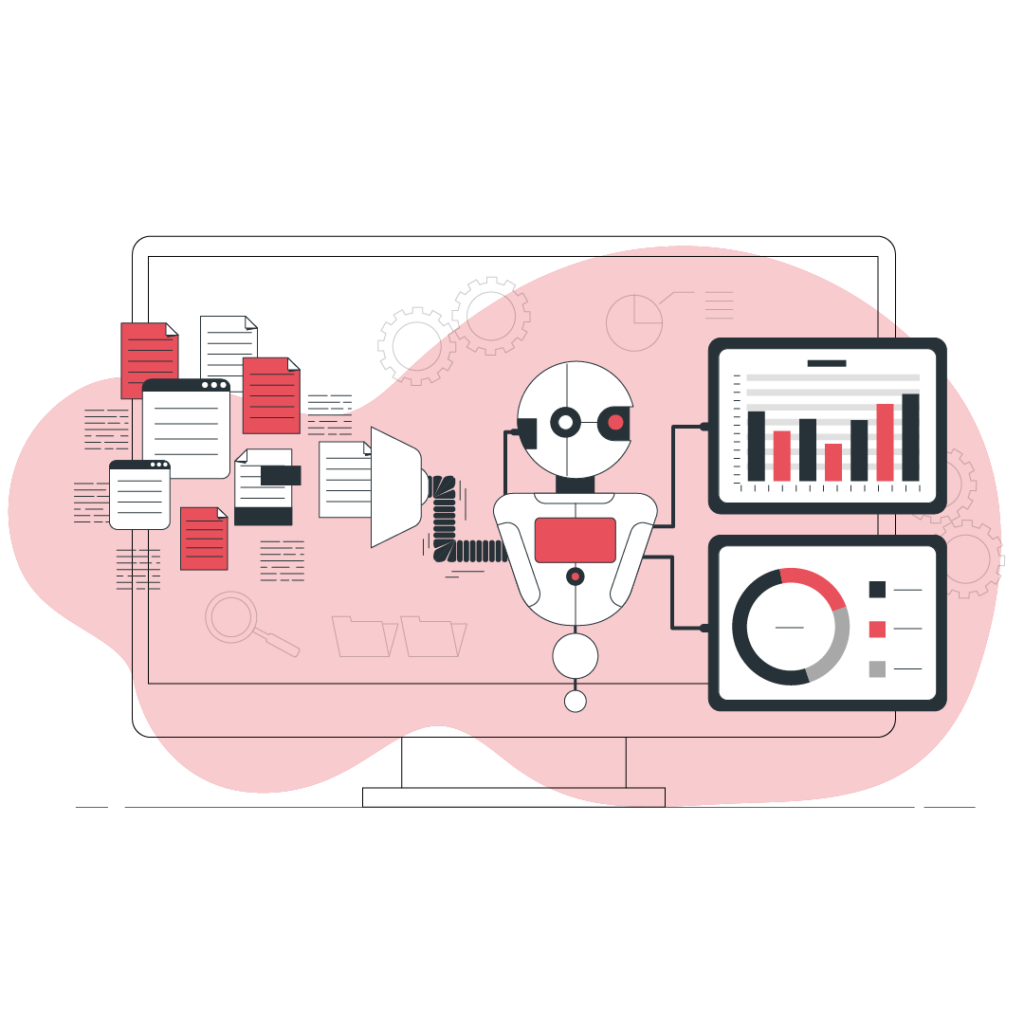
The 7 Biggest Artificial Intelligence (AI) and Data Science Trends in 2022
The year 2021 was full of ups and downs but it was still markedly better than 2020. With the pandemic becoming more manageable, enterprises across industries realized the importance of artificial intelligence (AI) and data science.
This accelerated the adoption of these technologies across organizations. In the year 2022, the trend is only going to increase. So, in this article, let’s discuss the 7 biggest AI and data science trends for 2022.
1. Responsible AI will gain significance

Responsible AI is the process of designing and developing AI with the intention to empower employees and businesses. Think of it as a framework that documents how a specific organization addresses the ethical and legal challenges associated with AI.
As per the 2020 State of AI and Machine Learning report, only 25% of the participating organizations said that responsible AI was important for them. 50% of the organizations either didn’t consider responsible AI as critical or are just beginning to think about it.
Until now, the goal was only to create efficient and faster AI. But in 2022 and beyond, we will slowly see responsible AI gain more significance.
As trust become an important factor, data governance and data security will become the foundational pillars for every organization. Most forward-thinking organizations would be the first to focus on ethical AI.
2. Larger language models will power conversational AI

2021 can be labeled as the year of language models since many tech giants released models to stay ahead in innovation. Some names come to mind like Gopher, GLaM, or Exaone.
Language models help AI understand human language and communicate with us. These language models can not only turn computer code into natural human language but also vice-versa.
Open AI’s language model, GPT-3, is an example of the most popular and advanced language model ever created. Now they are working on its successor, GPT-4, which is expected to be 500-times larger than GPT-3. This would significantly boost the capabilities of conversational AI.
In 2022 and beyond, we will see many such larger language models. This means that AI will be able to hold conversations that’ll be indistinguishable from those of a human.
Moreover, the future language models won’t only be trained on text but also on videos, audio, images, and more. This will improve diversity as well as enhance learning speeds.
3. AI will be crucial for the metaverse

Metaverse is a network of immersive 3D virtual worlds powered by AR/VR, AI, cloud computing, blockchain, and social commerce. It’s like the internet, only more immersive.
AI will form an important pillar of the metaverse. It will not only drive automated experiences in the metaverse but will also power AI beings that will assist us. For example, think of an AI partner in a game of chess or tennis in the metaverse.
Some other use cases of AI in metaverse will include –
- Realistic avatar creation
- Digital humans or 3D chatbots
- Language processing and multi-language support in the metaverse
- VR scalability in the metaverse
- Human-computer interactions (HCIs)
- Hyper-personalized games and experiences
- Intelligent networking
- Enhanced smart contracts
4. Small data and tiny ML will become more common

The huge collection of data that we’ve been generating and analyzing is colloquially referred to as Big Data. We have been processing this Big Data using large machine learning (ML) algorithms like GPT-3.
But these ML models are quite complicated. Moreover, working with Big Data requires cloud-based systems with unlimited bandwidth.
That’s why the concept of “Small Data” is gaining traction. It can facilitate fast, cognitive analysis of the most important data with limited bandwidth, time, and energy expenditure.
It’s a concept similar to that of edge computing. For example, self-driving cars or IoT devices cannot rely on always sending and receiving data from a central server and thus need to process data at their end. This where is small data comes into play.
TinyML, on similar lines, refers to machine learning algorithms that can take little space and run on low-powered hardware like edge devices (e.g., smart wearables, home appliances, cars, etc.)
In 2022, we are only going to see increased adoption of small data and tiny ML.
5. No-code/low-code technology will simplify AI

2021 was also the year of low-code/no-code (LC/NC) technology, with a number of significant LC/NC businesses coming to the fore.
Forrester predicts the market for LC/NC to grow to $21.2 billion in 2022 from just $3.18 billion in 2017.
The same trend will be seen in AI as more LC/NC AI solutions emerge. Since there is a scarcity of skilled AI engineers in many organizations, LC/NC solutions can help tackle it by offering simple interfaces to construct increasingly complex AI systems.
Similar to how today’s LC/NC tools allow users to create web pages or other interactive systems by simply dragging and dropping graphical elements together, LC/NC AI systems will let users create smart programs with ease.
6. Automated machine learning will advance

Automated machine learning (or AutoML) is an exciting trend in AI that’s democratizing data science. AutoML developers create tools and platforms that allow anyone to create their own ML apps.
This can come in handy, especially for subject matter experts, who might have their expertise and insights but often lack the requisite coding knowledge to apply AI.
It can also help data scientists by making data cleaning easier for them. Since a data scientist’s majority of time is spent cleansing and preparing data, AutoML can help automate these repetitive and mundane tasks.
Along with automating these repetitive tasks, AutoML also involves building models and creating algorithms and neural networks.
2022 will likely see us take a big step closer to AutoML where if one needs to solve a particular problem, they will be able to apply ML through a simple, user-friendly interface.
7. Creative AI will redefine the boundaries of what’s possible
AI is no longer limited to automating repetitive tasks. These days, AI is also being used to write songs, mimick great painters, and assist filmmakers.
In 2022, we will be seeing further growth of creative AI when new models like GPT-4 will be released. We may see boundaries redefined of what’s possible through AI. The result would be more elaborate and seemingly “natural” creative output from AI.
We will see AI being applied to creative tasks like writing headlines for articles, designing logos, or writing movie scripts.

Conclusion
2022 will be an exciting year for AI and data science. However, these are only some of the ideas that we discussed in this article. The scope is huge and we’ve only scratched the surface.
Moreover, like any other technology, AI and data science are changing by the day. So, let’s keep a tab on these trends to stay one step ahead. Let’s wait and see how AI and data science evolve in the coming year.
Did you enjoy reading this piece? If you’d like to read more such articles then check out Dresma’s blogs.

